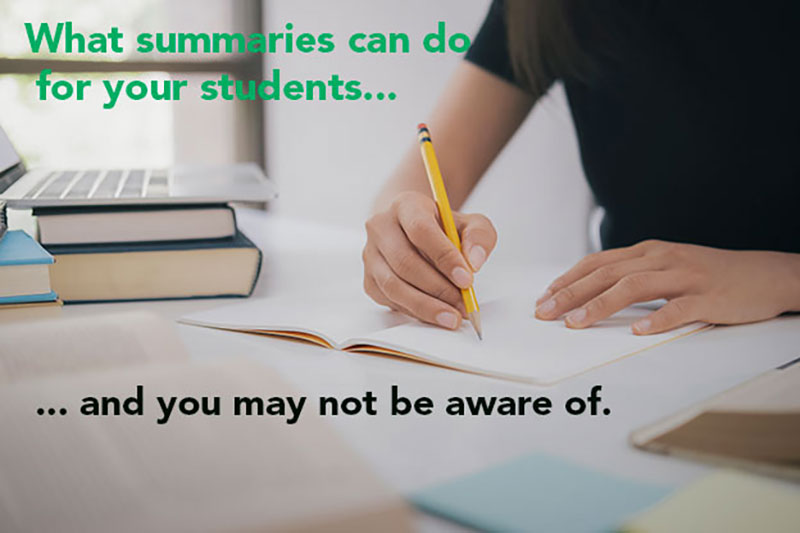
ONE. Because summarizing is a key microskill that we activate when we mediate both written and oral texts.
It is activated whenever the mediator needs to process a text.
Now, what does Processing a Text imply?
It implies several micro-processes or actions, all of them of a certain degree of complexity for students: processing the input, reformulating it, and then reprocessing the information as they produce their own output.
Let’s not forget that the input source and the output text will have different purposes, which will make them differ substantially.
TWO. Because it activates a natural sequence that becomes automatic when practiced regularly.
This is what happens from the moment students get their task:
First step: students read the context and task, identify the premises, and compose a plan in their mind. With that plan in mind, they read the text.
The context and task will instruct them to do one or more of the following things:
Second step: reading comprehension. The mediator reads the text, understands its key ideas, maybe even underlines them or takes note of them. They are reading for detail here, so they need to read carefully.
This is the students’ text mapping process.
It is an excellent idea to train your students in text mapping, by the way. I will tell you about the wonders of this effective technique in my next article.
Now let’s get back to the sequence in SUMMARIZING.
Third step: students decide what is relevant in the text and worth relaying.
Now, to relay that relevant information, they may choose to do it in the same order as the source text, or in a different order if they consider it fits the goal of the communication better.
Finally, the mediated production will be a condensed transferrence of the source that is appropriate for the context.
As you can see, SUMMARIZING:
And so here comes the third reason why we should make sure we’re doing our best when teaching our students how to summarize.
THREE. Because if well taught, with a well-structured method, summarizing is a microskill that can work wonders.
And not only for student’s ability to mediate.
It will also have a positive impact on their reading and listening comprehension skills, as well as on their oral and written production skills.
Their ability to summarize and synthesize will no doubt come in real handy when it comes to production stages in any exam situation when they have limited time to convey their ideas.
So make sure you get your students summarizing sooner than later.*
* You could start sending them Summary Tasks as soon as you finish reading this email… That is, NOW!

In case you’re not sure where to start, here you have some close to perfect holiday tasks to send your students.